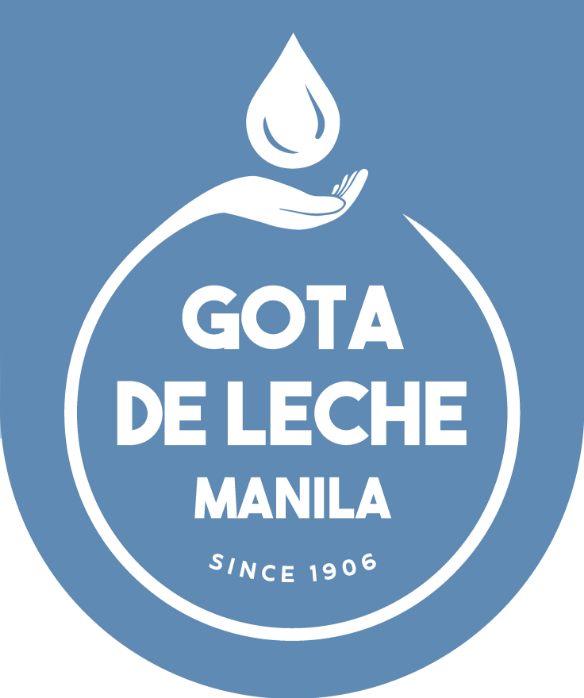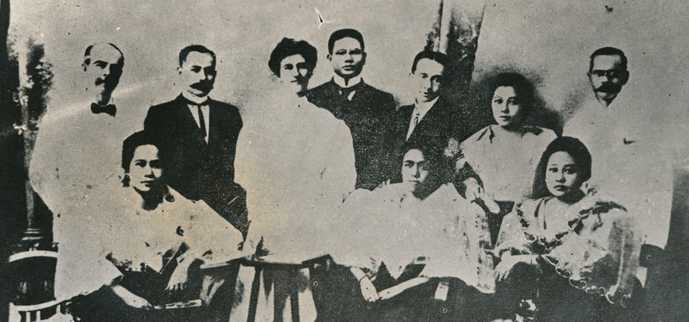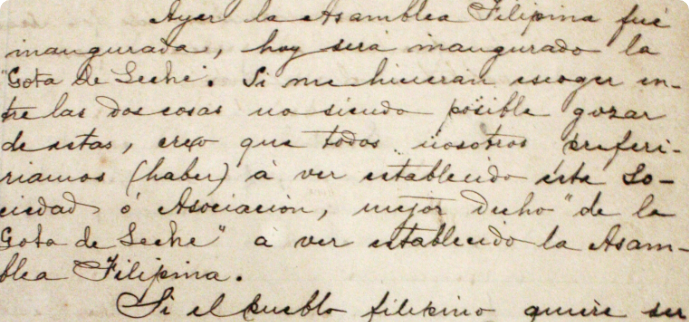Timeline
The Asociación Feminista Filipina is established.
On September 23, 1906, an important meeting was held at 19 Crespo Street, Quaipo, Manila. Several civic-minded women (most of them from the Asociación Feminista Filipina) such as Concepcion Felix de Calderon, Maria Arevalo, Librada Avelino, Trinidad Rizal, Asuncion Soriano, Helen Wilson, Carmen Manuel de Gerona and Maria Flores de Villamor were in attendance. The gathering’s primary objective was to discuss the possibility of setting up a milk station in the Philippines to combat the high rate of infant mortality at the time.
Start of Gota de Leche project
This led to the founding of Gota de Leche which saw the establishing of a milk station and dairy socialized distribution system for pasteurized cow’s milk. The formulation of maternal nutrition and educational programs are the first activities. 1907 – La Proteccion de la Infancia became an incorporation.
Don Teodoro Yangco donation of the building
Finally, a benevolent philanthropist, Don Teodoro Yangco, donated the 3,318 square-meter lot on Lepanto Street where the Gota de Leche building stands until today. Along with the property, he gave La Proteccion de la Infancia 8,000 pesos to help with the building’s construction. Government financial aid and an annual subsidy of 12,000 pesos also helped with the construction’s completion.
Women’s Suffrage
WWII Japanese Occupation
Beyond providing milk for undernourished children, the Gita de Leche ladies educated mothers on maternal and infant care. More importantly, they served to keep public interest alive via regular reports to the headquarters, and with direct appeals to prospective benefactors and patrons. These regular meetings and fund-raising campaigns continued even during the Japanese occupation. The war brought with it even more difficulties and disease, increasing the number of Gota de Leche beneficiaries to over five hundred babies. But as records and history show, no war could stop the foundation’s medical team and volunteerism.
Establishment of Manila Children’s Hospital
The Manila Children’s Hospital began as a children’s clinic in Manila, and opened its doors to a new building in 1950, beside Gota de Leche. Dra Fe del Mundo was its first Medical Director. Lourdes Almeda Lopez volunteered as administrative staff while still in college. But after giving birth to her first child, Jose, she was given a token allowance.
Restoration of Gota de Leche Building
In 2002, the property underwent restoration. The initiative received an honorable mention in the 2003 Asia-Pacific Heritage Awards for Cultural Heritage Preservation from the United Nations Educational, Scientific, and Cultural Organization (UNESCO). The restoration adapted the use of local materials and craftsmanship in the existing tilework, grille work, and capis window panes in wooden lattice frame. In 2014, it was declared an Important Cultural Property by the #NationalMuseumPH.












